BONE REGENERATION
CERASORB® CPC
Bone Void Filler
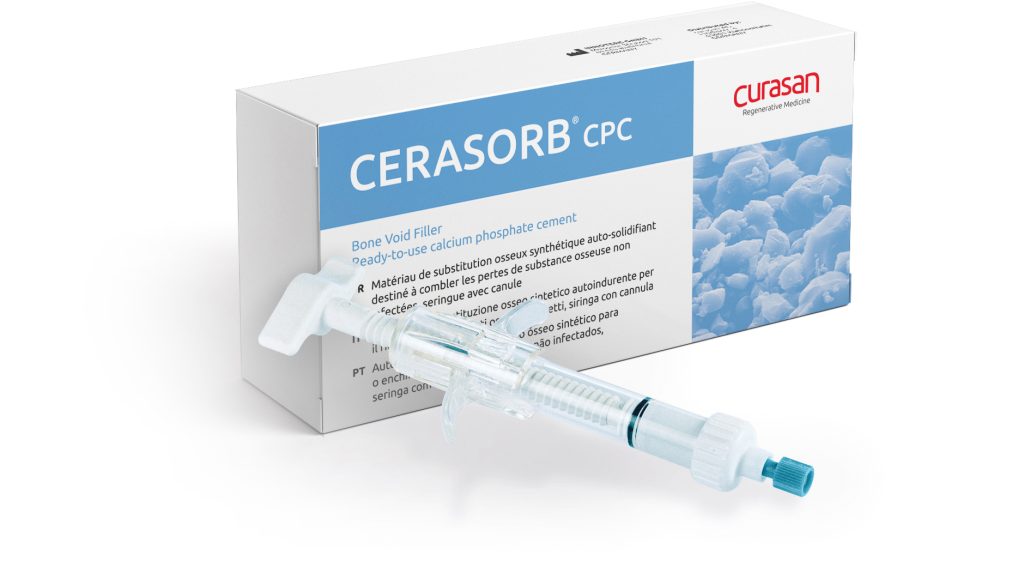
Bone defects are common and occur in many clinical situations including high grade open fractures with bone loss, high energy trauma, blast injuries, infection requiring debridement of bone, and resection of bone tumors or cysts.
There is a significant burden of disease associated with the management of bone defects, particularly if the bone defect is critical sized or when the planned reconstruction requires secondary surgery and autogenous bone grafting, often complicated by drawbacks such as donor site morbidity, limited graft volume, anesthesia time, need for additional surgical resources, and poor results in a significant number of patients.
A huge number of challenges can be solved with the latest addition to curasan’s orthobiologic portfolio, CERASORB® CPC Bone Void Filler.
REASONS FOR CERASORB® CPC BONE VOID FILLERS
❯ steady remodeling process
❯ radio-opaque
❯ no setting in applicator syringe
❯ complete setting and hardening after contact with aqueous body fluids
❯ high compressive strength (up to 45 MPa)
❯ supports osteosynthesis by increased stability
❯ ready-to-use
❯ easy-to-use
❯ stored at temperatures between 5° C and 25° C (room temperature recommended)
❯ transport validation up to 55° C.
PROPRIETARY TECHNOLOGY - METHOD OF ACTION
CONSISTENCY & COMPRESSIVE STRENGTH
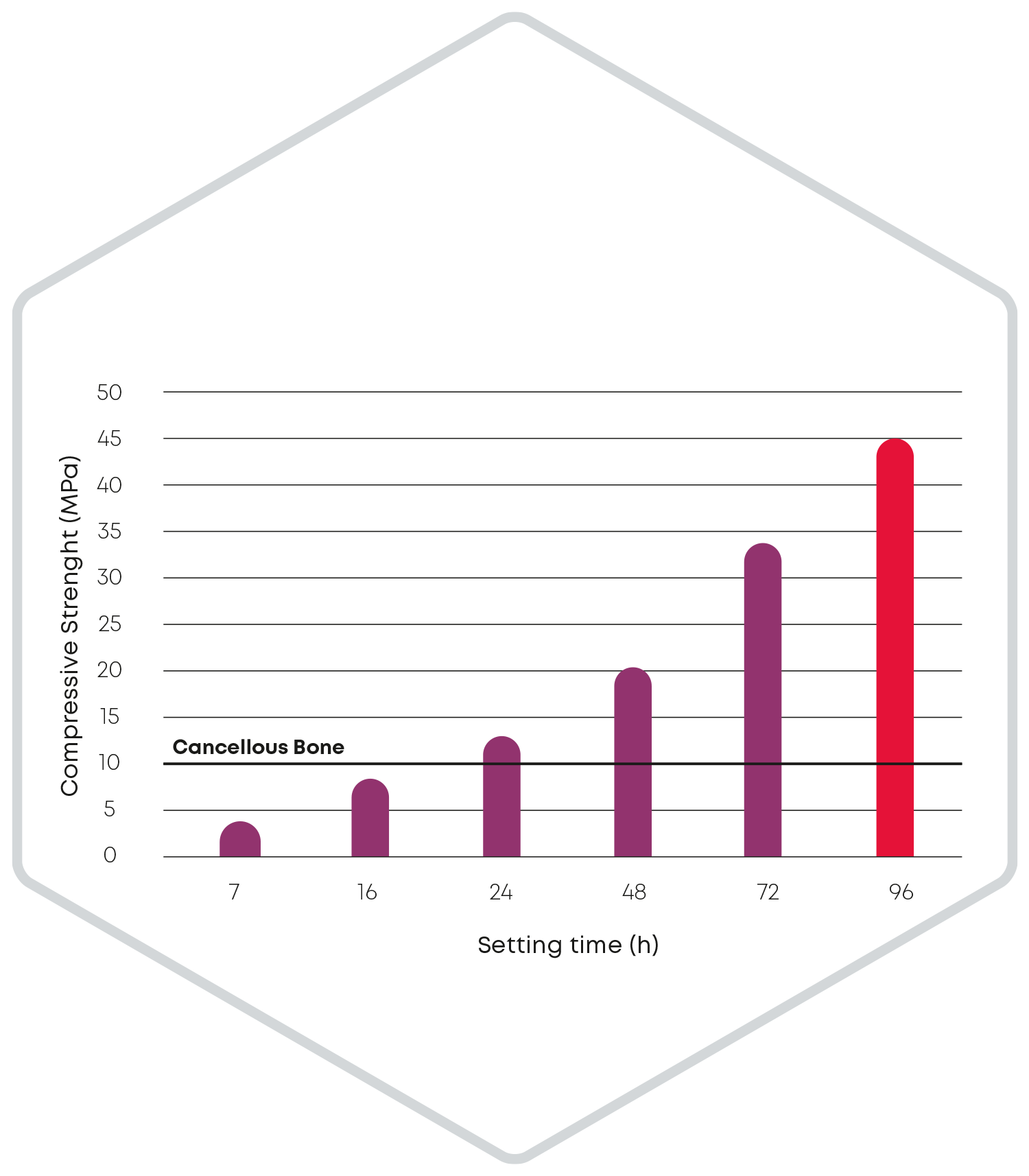
PHASE EVOLUTION
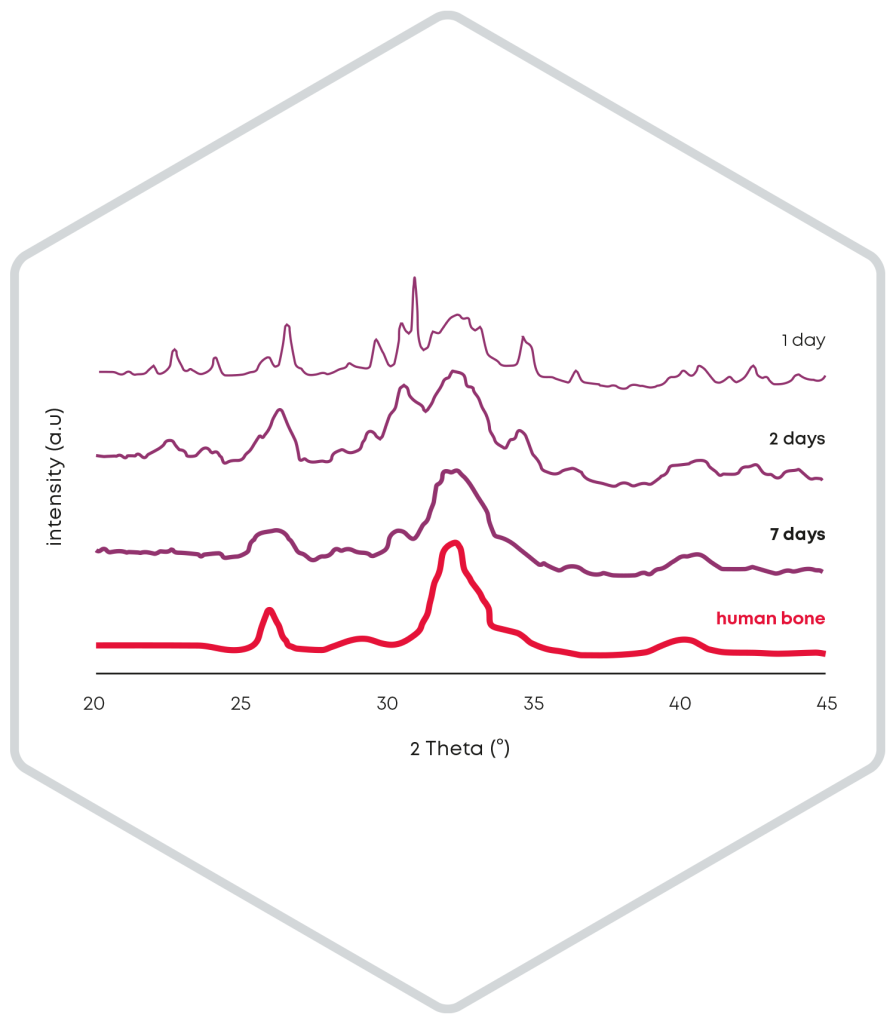
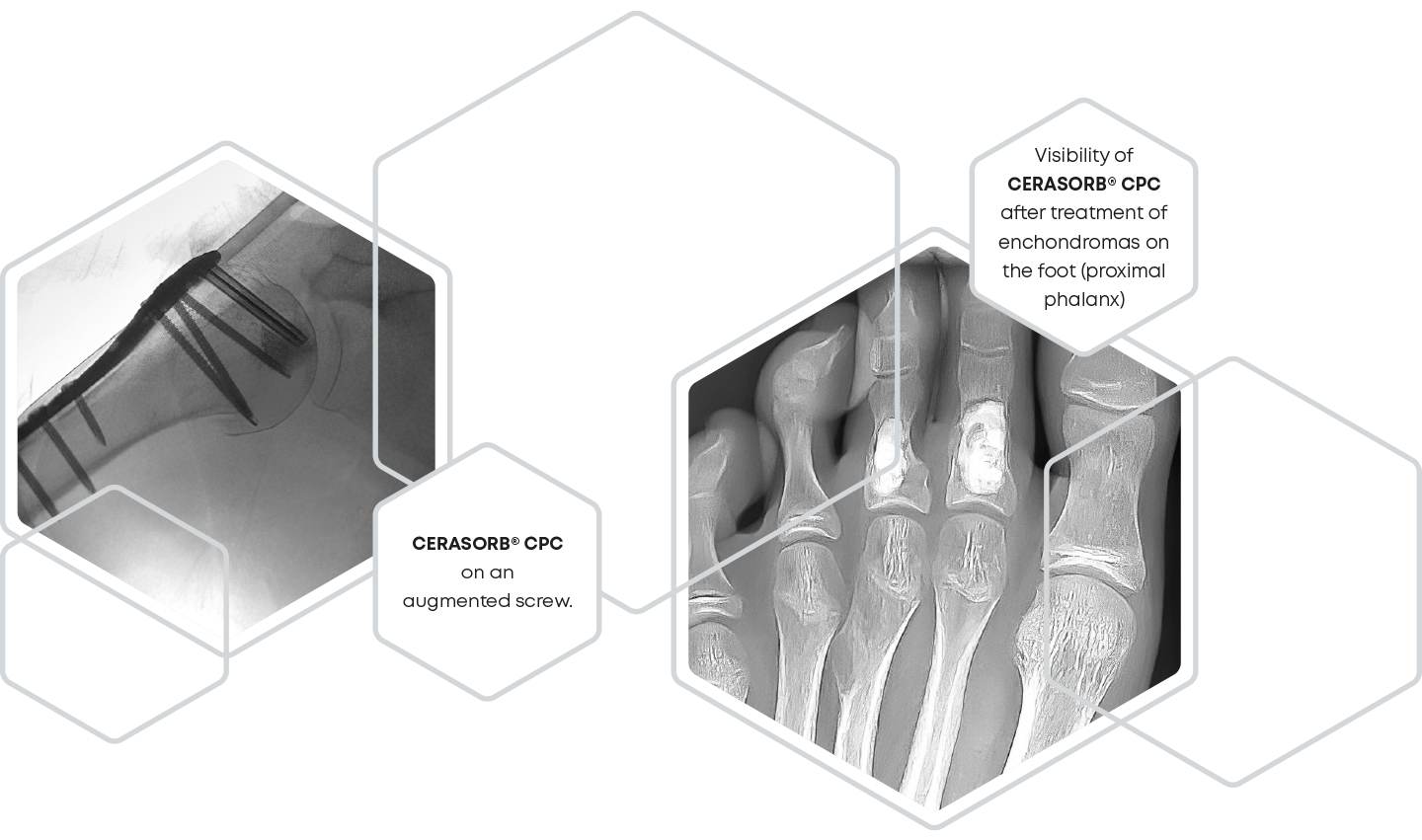
COHESION & DEFECT FILLING
The release of particles during the setting reaction of a bone substitute cement is significantly influenced by the cohesion. Accordingly, during the development of CERASORB® CPC, care was taken to minimize particle release to below 2 % after injection in water. Thus, even in the case of screw augmentation, CERASORB® CPC fills the entire defect and remains completely in the bone cavity instead of flowing back along the screw from the tip to the head or leaking out under the screw head.
RADIO-OPACITY
INDICATIONS
CERASORB® CPC is an orthobiological, biomineral bone cements for regenerative bone augmentation. The biodegradeable and self-setting calcium phosphate cement are indicated for filling bone defects, reinforcing temporary osteosynthesis fixation and filling or reconstructing non-load-bearing bone defects.
The scope of application includes, but is not limited to:
❯ metaphyseal defect fractures, (such as fractures of the tibia, radius and humerus).
❯ bone defects following resection (such as of benign tumors and cysts)
❯ bone defects after removal or replacement of osteosynthetic implants
❯ support for the fixation of osteosynthetic implants (such as bone screws)
CERASORB® CPC must only be used on well-vascularized and non-infected bone sites. Correct repositioning and stabilization of fractures by means of suitable fixation must also be ensured.
(For the complete list of indications and contraindications, please refer to the current version of the Instructions for use).
University Hospital Regensburg, Germany. Department of Trauma Surgery
Lateral tibial plateau fracture left tibia, type Schatzker V
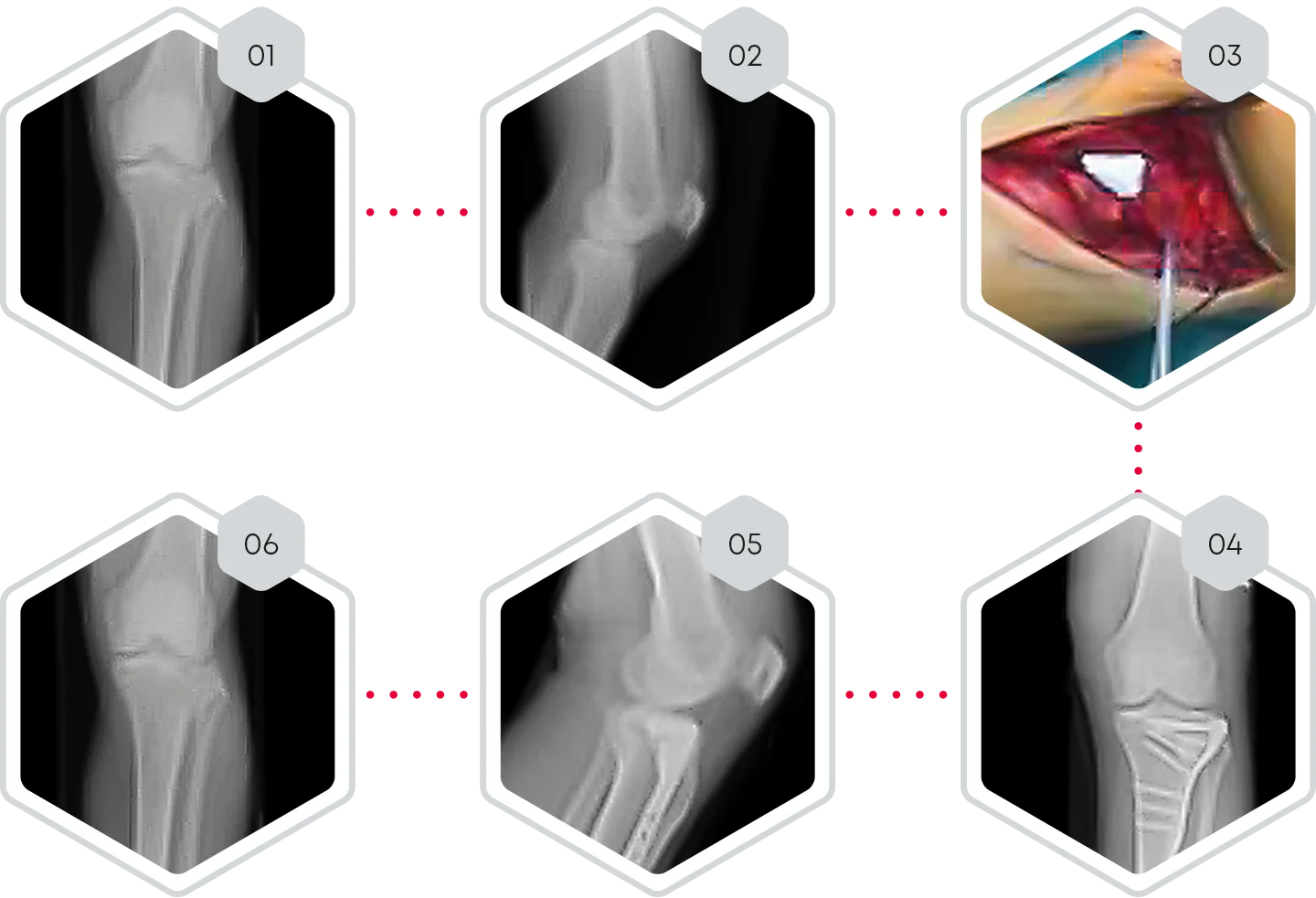
❯ 01-02 Pre-operative X-rays of tibial plateau fracture, type Schatzker V
❯ 03 Open reduction of lateral tibial plateau left and bone defect filling with CERASORB® CPC
❯ 04-05 Day 1 post-operative x-rays.
❯ 06 6 months post-operative x-rays.
Clinical follow-up.
CERASORB® CPC was easy to handle during the operation and allowed sufficient bone defect filling. 6 months post-operative, X-rays showed complete fracture healing with osseous integration and initial degradation of CERASORB® CPC. No subsidence of the articular surface could be observed. CERASORB® CPC supports the defect through good osseous integration and is gradually replaced by the newly formed bone.
University Hospital Regensburg, Germany. Department of Trauma Surgery
Ankle fracture type WEBER C with bony defect of distal fibula
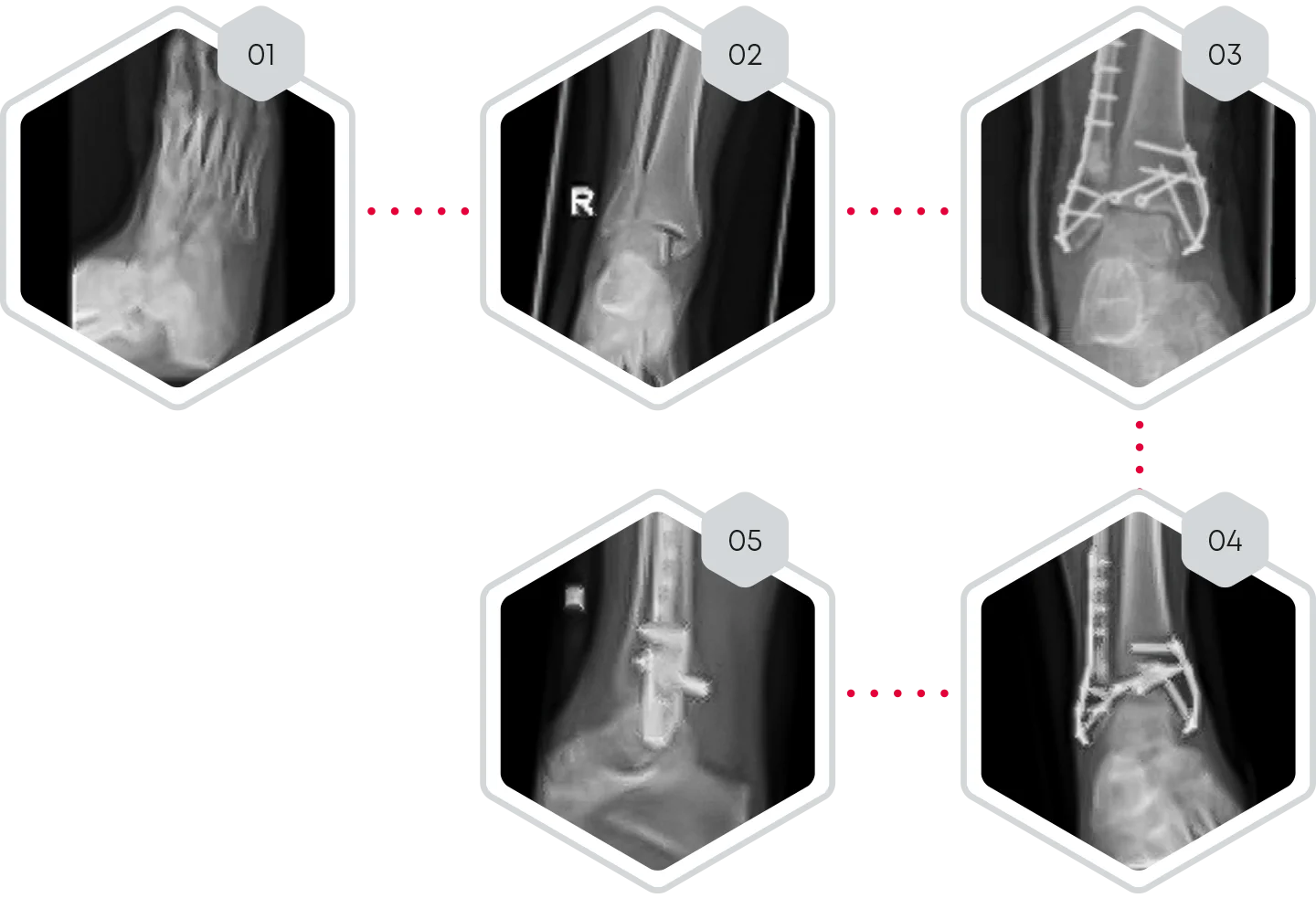
❯ 01-02 Pre-operative X-rays of ankle fracture type WEBER C with bony defect of distal fibula
❯ 03 Day 1 post-operative x-ray. Open reduction and filling of the fibula defect with CERASORB® CPC
❯ 04-05 10 weeks post- operative X-rays.
Clinical follow-up.
CERASORB® CPC was easy to handle during the operation
and allowed sufficient bone defect filling. 10 weeks post-operative, X-rays showed complete fracture healing with beginning of osseous integration of CERASORB® CPC. CERASORB® CPC supports the defect through good osseous integration and is gradually replaced by the newly formed bone.
